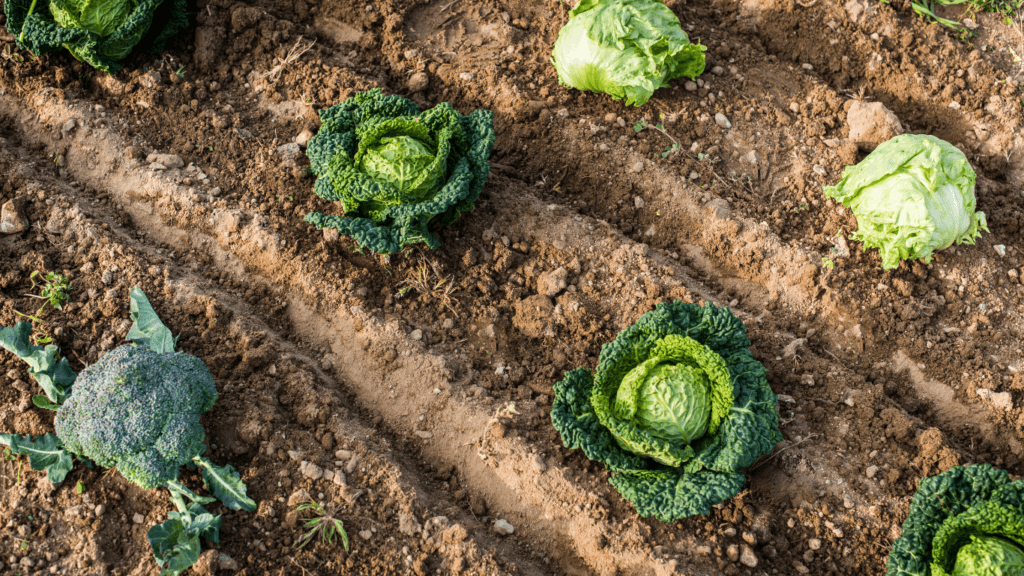Understanding Sustainable Farming Grants
Sustainable farming grants are financial aids aimed at promoting eco-friendly agricultural practices. These grants help farmers implement sustainable methods, conserve resources, and reduce environmental impact. Various government bodies, non-profit organizations, and private entities offer these grants.
Government programs often provide substantial funding. The United States Department of Agriculture (USDA) offers grants like the Environmental Quality Incentives Program (EQIP) and Sustainable Agriculture Research and Education (SARE). EQIP helps farmers with conservation practices, while SARE focuses on innovative research and education.
Non-profit organizations also contribute. For example, the National Sustainable Agriculture Coalition (NSAC) provides resources and support for sustainable farming initiatives. They focus on policy advocacy and education to empower farmers.
Private entities sometimes offer grants to support sustainability. Companies such as Patagonia and Annie’s promote eco-friendly agricultural practices through their grant programs, emphasizing soil health, water conservation, and biodiversity.
Farmers need to meet specific criteria to qualify. Eligibility often includes a commitment to sustainable practices, a detailed project proposal, and sometimes, matching funds. Grant applications usually require thorough documentation and a clear outline of expected outcomes.
Understanding the intricacies of these grants can help farmers secure the necessary funding. Properly leveraging available resources enables them to adopt innovative solutions and push the boundaries of traditional farming methods.
Importance of Sustainable Farming

Sustainable farming plays a critical role in promoting environmental health and economic viability. It ensures the long-term productivity of agricultural land while conserving resources.
Environmental Benefits
Sustainable farming reduces pollution, conserves water, and enhances soil fertility. Practices like:
- crop rotation
- reduced tillage
- organic farming
decrease chemical use. By fostering biodiversity, these methods create resilient ecosystems, which protect against pests and diseases. Reduced greenhouse gas emissions from more efficient practices help mitigate climate change.
Economic Advantages
Adopting sustainable farming methods lowers operational costs and improves yields long-term. Reduced dependency on chemical inputs saves money.
Sustainable practices often qualify for grants and subsidies, providing additional financial support. Market demand for sustainably-produced goods allows farmers to charge premium prices, enhancing profitability.
Success Stories Around the World
Sustainable farming grants have transformed agricultural practices globally. Let me share notable examples of farmers who achieved remarkable success through these grants.
North America
In North America, Tom Carter in California utilized a $50,000 grant to implement drip irrigation and cover cropping on his 100-acre farm. These practices decreased water usage by 20% and increased soil fertility, leading to a 15% rise in yield. Similarly, Sarah Thompson in Iowa leveraged $30,000 to adopt no-till farming and crop diversification, achieving a 25% reduction in operational costs.
Europe
Europe also boasts inspiring stories. In France, Jean Dupont received a €40,000 grant to transition his vineyard to organic farming, reducing chemical use by 80% and boosting biodiversity. Meanwhile, in Spain, Maria Garcia invested her €35,000 grant in precision agriculture technologies, resulting in a 30% reduction in water consumption and a 20% increase in grape production.
Asia
In Asia, Raj Patel from India secured a ₹2,000,000 grant to establish an integrated farming system that combined livestock, fishery, and crop production. This system enhanced resource efficiency and increased his farm’s profitability by 35%. Li Wei in China used a ¥300,000 grant to develop agroforestry practices, which restored degraded lands and improved crop yields by 25%.
Africa
In Africa, sustainable farming grants have made significant impacts. Nchimunya Kalaba in Zambia received a $20,000 grant to implement conservation agriculture techniques, reducing soil erosion and tripling his maize yield. In Kenya, Amina Ali used a $15,000 grant to start a community-supported agriculture (CSA) initiative, which provided fresh produce to local markets and improved her income by 40%.
Common Challenges and How They Overcame Them
Farmers often face several obstacles when pursuing sustainable farming grants. Here’s how they’ve managed to overcome these challenges effectively.
Accessing Information
Farmers initially struggle to locate detailed information on available grants. Many rely on local agricultural extension services for guidance.
For example, in Nebraska, farmers accessed resources through extension agents, who provided comprehensive data on eligibility criteria and application processes. Online databases and forums have also become valuable tools, offering updated lists and shared experiences from successful applicants.
Funding Requirements
Meeting funding requirements can be complicated. Farmers frequently need to comply with stringent eligibility criteria and documentation.
In Kansas, growers seeking grants collaborated with local universities to better understand these requirements. By attending workshops and training sessions hosted by agricultural colleges, they improved their chances of qualifying for grants. Professional grant writers have also played a crucial role in helping farmers prepare compelling applications.
Implementation Issues
Implementation of sustainable practices often presents logistical challenges. Farmers adopting new technologies such as precision agriculture encounter difficulties in training and adaptation.
In Iowa, farmers overcame these issues by forming cooperatives, sharing both knowledge and resources. Joint efforts in acquiring equipment and training allowed them to efficiently implement and maintain sustainable practices, ensuring they meet grant stipulations and achieve desired outcomes.
Tips for Applying for Sustainable Farming Grants
Farmers can enhance their chances of securing sustainable farming grants by following a strategic approach.
-
Research and Preparation
Farmers should start by identifying relevant grants for their projects. They can use government websites, agricultural extension services, and industry publications to find opportunities. Ensuring eligibility before spending time on an application is crucial. I recommend gathering all necessary documents like land ownership papers, financial records, and environmental impact assessments upfront.
-
Crafting a Strong Application
A compelling application narrates the farmer’s journey, goals, and expected impact. Clearly outlining the sustainability practices to be implemented, and how they’ll improve yield or reduce costs, adds value. Demonstrating previous projects or trials with data can strengthen the application. Precision in adhering to submission guidelines prevents disqualification.
-
Post-Grant Management
Effective post-grant management ensures long-term success. Farmers need to track progress, measure outcomes, and maintain records accurately. Regular reporting as per grant requirements validates the funds’ usage. Engaging with grant providers through updates fosters goodwill, paving the way for future opportunities.
Future of Sustainable Farming Grants
Sustainable farming grants offer transformative potential for agriculture. Governments and private organizations worldwide continue to increase funding to address climate change and food security. According to the USDA, the agency allocated over $15 billion in 2022 for conservation and sustainable agriculture programs.
Technological advancements drive sustainable farming. Precision agriculture, AI, and IoT enhance efficiency. For example, AI-driven soil analysis helps farmers optimize input use, reducing environmental impact and cost. Grant programs increasingly support such innovations.
Policy changes influence grant availability. Governments prioritize sustainable practices through regulations and incentives. In the US, the 2018 Farm Bill expanded support for organic farming and renewable energy, reflecting evolving policy trends.
Collaboration strengthens grant effectiveness. Partnerships between farmers, researchers, and organizations foster knowledge sharing and innovation. The European Innovation Partnership (EIP-AGRI) is a model initiative promoting collaboration for sustainable agriculture in Europe.
Sustainable farming grants evolve with market demand. Consumers prioritize eco-friendly products, driving demand for sustainable farming. Grants support farmers in meeting these market needs, enhancing profitability and sustainability.
Education and outreach expand grant access. Training programs and resources assist farmers in applying for grants. For instance, the Cooperative Extension System offers workshops and support to navigate the grant application process.
Sustainable farming grants hold promise for the future. With continued funding, technological innovation, supportive policies, collaboration, market alignment, and educational resources, these grants will drive the agricultural sector toward a more sustainable path.



